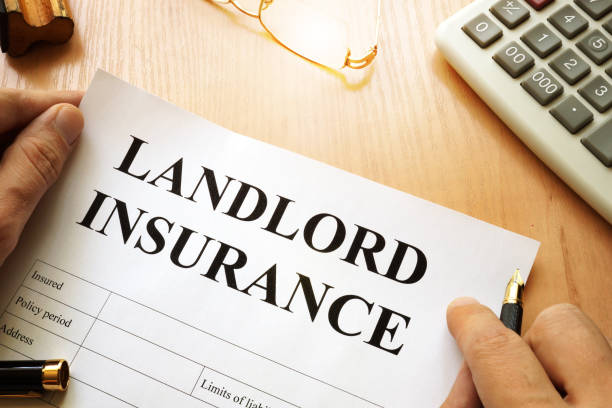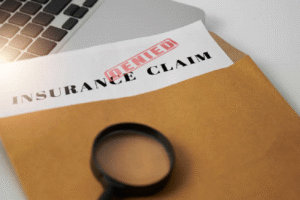If you’re a landlord, protecting your rental property isn’t just smart—it’s essential. Fires, storms, tenant damage, or even legal claims can all put your investment and income at risk. That’s where landlord insurance comes in. Unlike standard homeowner insurance, landlord insurance is tailored specifically to cover the unique risks landlords face.
But with so many options out there, how do you pick the right policy that fits your property, your tenants, and your budget? This guide breaks down everything you need to know about choosing landlord insurance, helping you make confident, informed decisions to protect your rental business.
Why Landlord Insurance Matters More Than You Think
First off, you might be wondering: “Why can’t I just use regular homeowner’s insurance for my rental property?” The truth is, landlord insurance covers risks that typical homeowner policies don’t.
When you rent out your property, different factors come into play:
-
Higher liability risks: You’re responsible if someone gets hurt on your property.
-
Tenant-related damage: Wear and tear or accidental damage caused by tenants isn’t usually covered under standard homeowner policies.
-
Loss of rental income: If your property becomes uninhabitable due to a covered event like a fire or flood, landlord insurance can cover the rent you lose while repairs are made.
Put simply, landlord insurance acts as a safety net for your investment, giving you peace of mind so you can focus on managing your rentals.

Step 1: Assess Your Property Type and Risks
No two rental properties are exactly the same. The first step in choosing the right insurance is understanding your property’s unique risk profile.
-
Single-family homes: These often have fewer tenants and risks but may require coverage for things like water damage or liability if you rent to families.
-
Multi-unit buildings: More tenants mean higher liability risk. Common areas like hallways and stairwells need protection too.
-
Vacation rentals or short-term rentals: These can have higher turnover and different liability concerns, plus risks like theft or damage from guests who are less familiar with the property.
Also, think about your location—is it prone to floods, storms, or earthquakes? Is your property in an urban area where vandalism might be more common?
Knowing these factors helps you choose coverage that matches your property’s needs rather than paying for unnecessary extras.
Step 2: Understand What Coverage Options Are Available
Landlord insurance typically covers a few main areas:
-
Property damage: Protects your building and sometimes other structures like garages or fences, from fire, storms, vandalism, or tenant damage.
-
Liability protection: Covers legal costs if someone is injured on your property or if you’re sued over negligence.
-
Loss of rent: Pays you if your property becomes uninhabitable due to an insured event, so you don’t lose income while repairs happen.
-
Legal expenses: Covers costs associated with eviction proceedings or disputes with tenants.
Many insurers also offer optional add-ons, such as:
-
Rent guarantee insurance: Covers you if tenants don’t pay rent.
-
Vandalism or malicious damage cover: For intentional damage by tenants or others.
-
Contents insurance: For furnished rentals, protects items you provide.
Make sure you understand what’s included and what you can add to suit your particular situation.
Step 3: Shop Around and Compare Policies
Don’t settle for the first landlord insurance policy you find. Take time to get quotes from several insurers. When comparing policies, look beyond just the price. Ask yourself:
-
What exactly is covered and what’s excluded?
-
Are the coverage limits sufficient for your property’s value?
-
How straightforward is the claims process? Can you file claims online or by phone?
-
What do customer reviews say about the insurer’s responsiveness and fairness?
Sometimes a cheaper premium means less coverage or more hassle when you actually need to make a claim. Finding a company with a strong reputation and good customer service is often worth paying a little extra for.
Step 4: Think Carefully About Your Deductibles
Your deductible is how much you pay out-of-pocket before the insurance company covers the rest. Choosing a higher deductible usually lowers your monthly premiums—but it also means you’ll have to pay more upfront if something happens.
If you have enough savings to cover a bigger deductible comfortably, this can be a good way to reduce ongoing costs. But if you want more predictable expenses or don’t want to risk large unexpected bills, a lower deductible might be better.
Balancing your deductible and premium is a personal decision—just be sure you fully understand how it works before you sign up.
Step 5: Watch Out for Exclusions
Every insurance policy has exclusions—things that aren’t covered. Common exclusions in landlord insurance can include:
-
Flood or earthquake damage (usually requires separate policies)
-
Normal wear and tear
-
Certain types of tenant damage or negligence
-
Maintenance issues that aren’t promptly addressed
Make sure you read your policy’s fine print carefully. If you live in a flood-prone area or have special risks, consider additional coverage or a separate policy to fill the gaps.
Landlord Insurance
Landlord Insurance
to Get the Most from Your Landlord Insurance
-
Review your policy regularly. Your property or tenant situation might change over time. Renovations, new tenants, or added amenities could affect your coverage needs.
-
Notify your insurer about changes. Let them know if you do major upgrades, switch tenant types, or add security systems. Sometimes this can lower your premiums.
-
Document your property’s condition. Take photos and keep records, especially before new tenants move in. This can make claims smoother and help resolve disputes.
-
Understand your responsibilities. Insurance doesn’t cover everything. Maintaining your property properly and following safety regulations are key to avoiding claims.

Final Thoughts: Protecting Your Investment and Peace of Mind
Choosing the right landlord insurance isn’t just about protecting bricks and mortar—it’s about securing your rental income and reducing stress when unexpected events happen. By assessing your property’s risks, understanding coverage options, comparing policies carefully, and reviewing your deductible and exclusions, you can find a plan that truly fits your needs.
Remember, your rental property is an important asset. Take the time to protect it well, and you’ll be better prepared for whatever comes your way.





